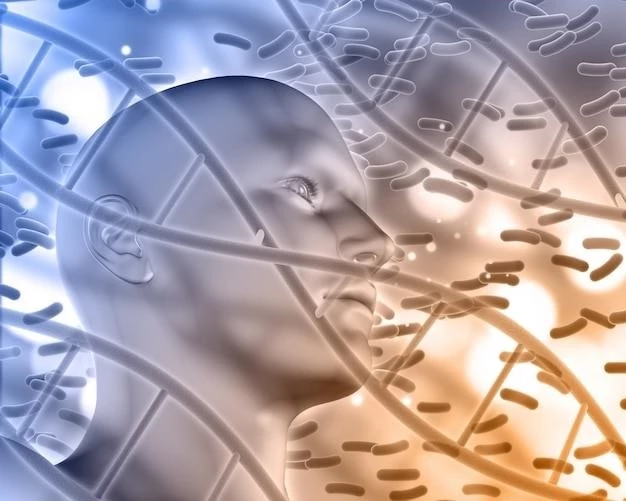Article Plan⁚ Disease ─ Succinic Semialdehyde Dehydrogenase Deficiency
Introduction to Succinic Semialdehyde Dehydrogenase Deficiency
Succinic semialdehyde dehydrogenase deficiency (SSADH-D) is a rare genetic disorder resulting from impaired activity of the mitochondrial enzyme succinic semialdehyde dehydrogenase. This condition affects the metabolism of the neurotransmitter γ-amino butyric acid (GABA) and can lead to manifestations such as mental retardation‚ autism‚ ataxia‚ and epileptic seizures.
SSADH-D is caused by loss-of-function mutations in the ALDH5A1 gene‚ which encodes the essential SSADH enzyme for the breakdown of succinic semialdehyde (SSA) into succinate. The disease presents with a wide range of clinical features including developmental delay‚ cognitive impairment‚ expressive language deficit‚ and more‚ with epilepsy being common in affected individuals;
Understanding the genetic and metabolic basis of SSADH-D is crucial for diagnosis and management. Individuals with SSADH-D may exhibit varying degrees of symptoms‚ making early detection and intervention important. Stay informed about the latest research and advancements in the field to ensure comprehensive care and support for those affected by this rare condition.
Genetic Basis and Molecular Mechanisms
Succinic semialdehyde dehydrogenase deficiency (SSADH-D) is a rare genetic disorder resulting from mutations in the ALDH5A1 gene‚ which encodes the enzyme responsible for the breakdown of succinic semialdehyde. This leads to the accumulation of substances like GABA and γ-hydroxybutyrate‚ impacting neurological function.
Understanding the molecular mechanisms behind SSADH-D is crucial for diagnosis and treatment. The enzyme deficiency affects the metabolism of GABA‚ a vital neurotransmitter in the brain‚ leading to a range of neurological and neuromuscular symptoms. Research into the genetic basis of SSADH-D continues to uncover crucial insights into the disease pathology.
Individuals with SSADH-D may present with a spectrum of clinical manifestations‚ highlighting the complex interplay between genetic mutations and biochemical pathways. By delving into the genetic and molecular aspects of SSADH-D‚ healthcare providers can offer tailored management strategies to improve patient outcomes.

Clinical Manifestations of SSADH Deficiency
Individuals with Succinic Semialdehyde Dehydrogenase Deficiency (SSADH-D) may exhibit a range of clinical manifestations‚ including developmental delay‚ cognitive impairment‚ expressive language deficits‚ and mild ataxia. Epilepsy is common‚ with about half of affected individuals experiencing seizures‚ which may be more prevalent in adults.
Other symptoms can include hyperkinetic behavior‚ aggression‚ self-injurious behaviors‚ hallucinations‚ and sleep disturbances. The variability in presentation underscores the complexities of this disorder‚ necessitating tailored management strategies to address the diverse needs of individuals affected by SSADH-D.
It is crucial for healthcare providers to recognize the diverse clinical features of SSADH-D to provide comprehensive care and support. Early identification and intervention can help improve outcomes and quality of life for individuals living with this rare genetic disorder. Stay informed about the latest research and advancements in managing the clinical manifestations of SSADH-D.
Diagnostic Approaches
Diagnosing Succinic Semialdehyde Dehydrogenase Deficiency (SSADH-D) involves a multidisciplinary approach combining clinical evaluation‚ genetic testing‚ and biochemical analyses. Healthcare professionals typically start with a thorough assessment of the individual’s medical history‚ physical examination‚ and neurocognitive evaluation to identify characteristic clinical manifestations.
Genetic testing plays a crucial role in confirming SSADH-D‚ with molecular analysis of the ALDH5A1 gene to detect pathogenic mutations. Biochemical tests measuring GABA‚ succinic semialdehyde‚ and other metabolites in blood‚ urine‚ or cerebrospinal fluid can provide additional diagnostic insights. Neuroimaging studies may reveal specific brain abnormalities associated with the disorder.
Given the variability in clinical presentation and the rarity of SSADH-D‚ collaboration with specialists in neurology‚ genetics‚ and metabolomics is recommended for an accurate diagnosis. Early detection of SSADH-D enables timely intervention and personalized treatment strategies to address the unique needs of individuals affected by this genetic disorder.
Treatment Options for SSADH Deficiency
Managing Succinic Semialdehyde Dehydrogenase Deficiency (SSADH-D) involves a multidisciplinary approach aimed at addressing the diverse symptoms associated with the disorder. Currently‚ treatment focuses on symptom management and supportive care to improve the quality of life for individuals affected by SSADH-D.
Therapeutic strategies may include antiepileptic medications to help control seizures‚ physical and occupational therapy to address motor coordination challenges‚ and speech therapy to improve communication skills. Behavioral interventions and counseling may be beneficial in managing hyperkinetic behavior‚ aggression‚ and other behavioral symptoms.
Given the rare and complex nature of SSADH-D‚ genetic counseling can offer valuable insights for affected individuals and their families‚ providing information on the inheritance pattern and potential risks. Stay informed about ongoing research and clinical trials exploring novel treatment approaches and potential targeted therapies for SSADH-D.
Epidemiology and Prevalence
Succinic Semialdehyde Dehydrogenase Deficiency (SSADH-D) is an ultra-rare autosomal recessive disorder affecting the metabolism of the inhibitory neurotransmitter gamma-aminobutyric acid (GABA). With approximately 450 diagnosed cases worldwide‚ this disorder poses unique challenges due to its rarity. Understanding the epidemiology and prevalence of SSADH-D is crucial for accurate diagnosis and appropriate treatment.
Given its uncommon nature‚ collaborative efforts among healthcare providers‚ researchers‚ and patient communities are essential to improve awareness and access to resources for individuals affected by SSADH-D. Stay informed about advancements in research and genetic testing to enhance early detection and intervention strategies for this rare neurological condition.
Impact on Neurological Function
Succinic Semialdehyde Dehydrogenase Deficiency (SSADH-D) significantly impacts neurological function due to disturbances in the metabolism of the neurotransmitter gamma-aminobutyric acid (GABA). Individuals affected by SSADH-D may experience a wide array of neurological symptoms‚ ranging from developmental delays and cognitive impairments to ataxia‚ epilepsy‚ and behavioral dysregulation.

The lack of proper breakdown of GABA can lead to the accumulation of GABA and its byproduct‚ gamma-hydroxybutyrate (GHB)‚ in the brain‚ resulting in molecular abnormalities that affect brain function. These disruptions can manifest as intellectual disability‚ seizures‚ hypotonia‚ and difficulties in movement coordination (ataxia).
Understanding the profound impact of SSADH-D on neurological function is crucial for tailored management strategies and support. Individuals with SSADH-D may benefit from a multidisciplinary approach involving neurologists‚ genetic counselors‚ and therapists to address the diverse neurological challenges associated with this rare genetic disorder.
Relationship to GABA Metabolism
The Succinic Semialdehyde Dehydrogenase Deficiency (SSADH-D) is intricately linked to the metabolism of the neurotransmitter γ-aminobutyric acid (GABA) in the brain. This rare neurometabolic disorder arises from mutations in the ALDH5A1 gene‚ leading to impaired breakdown of GABA and the accumulation of gamma-hydroxybutyric acid (GHB).
Individuals with SSADH-D experience disruptions in GABA catabolism‚ resulting in the neurotoxic accumulation of GHB. This abnormality can lead to a spectrum of neurological and neuromuscular symptoms‚ including cognitive impairment‚ ataxia‚ seizures‚ and behavioral dysregulation. Understanding the dysfunctional GABA metabolism in SSADH-D is crucial for tailored treatment approaches and symptom management.
Stay informed about ongoing research on GABA metabolism and its implications for SSADH-D to enhance understanding of this complex genetic disorder and improve outcomes for affected individuals.
Progress in Research and Understanding
Advancements in understanding Succinic Semialdehyde Dehydrogenase Deficiency (SSADHD) have been significant since its identification in the 1980s. In recent years‚ research has focused on the evolving phenotype and genetic spectrum of patients with this rare disorder. Collaborative studies have highlighted the relationship between genotypic variations and the diversity of clinical manifestations observed in individuals with SSADHD.
Experimental models‚ such as murine knockout models‚ have provided valuable insights into the pathophysiology of SSADHD and allowed for the exploration of potential therapeutic targets. By elucidating the molecular mechanisms underlying SSADHD‚ researchers aim to develop more effective treatment strategies and improve outcomes for affected individuals.
Stay informed about the latest research findings and clinical developments in the field of SSADHD to support ongoing efforts in enhancing understanding‚ diagnosis‚ and management of this complex neurogenetic disorder.
Case Studies and Patient Experiences
Exploring case studies and patient experiences of Succinic Semialdehyde Dehydrogenase Deficiency (SSADH-D) provides valuable insights into the diverse clinical manifestations and challenges faced by individuals living with this rare genetic disorder. These real-life accounts shed light on the impact of SSADH-D on neurological function‚ behavior‚ and overall quality of life.
By delving into case studies‚ healthcare professionals can gain a deeper understanding of the complexities of SSADH-D and tailor treatment approaches to meet the unique needs of each patient. Patient experiences offer valuable perspectives on coping mechanisms‚ support systems‚ and the importance of ongoing research in advancing the management of SSADH-D.
Stay informed about the personal journeys of individuals with SSADH-D to enhance your understanding of this rare neurogenetic disorder and provide holistic care and support to those affected by SSADH-D.
Challenges in Managing SSADH Deficiency
Managing Succinic Semialdehyde Dehydrogenase Deficiency (SSADH-D) presents unique challenges due to the complexity and variability of symptoms associated with the disorder. Challenges in managing SSADH-D arise from the rare nature of the condition‚ diverse clinical manifestations‚ and the lack of definitive curative treatments.
Healthcare providers face difficulties in early diagnosis and personalized treatment strategies for individuals with SSADH-D‚ given the limited understanding of the disease’s pathophysiology and the scarcity of effective therapeutic options. The heterogeneity in symptom presentation adds to the complexity of managing the disorder and necessitates individualized care plans.
Fostering collaboration among researchers‚ clinicians‚ and patient advocacy groups is essential to address the challenges in managing SSADH-D comprehensively. By staying updated on emerging research developments and sharing insights with the medical community‚ healthcare professionals can enhance the quality of care and support for individuals impacted by this rare genetic disorder.
Supportive Care and Therapeutic Strategies
Providing supportive care and implementing effective therapeutic strategies are essential components of managing Succinic Semialdehyde Dehydrogenase Deficiency (SSADH-D). Supportive care interventions focus on addressing the diverse neurological‚ cognitive‚ and behavioral challenges faced by individuals with SSADH-D.
Therapeutic strategies may involve a multidisciplinary approach‚ including antiepileptic medications to manage seizures‚ physical and occupational therapy to enhance motor skills‚ and speech therapy to improve communication abilities. Behavioral interventions‚ counseling‚ and educational support may help address hyperkinetic behavior‚ aggression‚ and other behavioral issues.
Empowering individuals and their caregivers with information‚ resources‚ and emotional support is crucial in navigating the complexities of SSADH-D. By working collaboratively with healthcare professionals and engaging with patient advocacy groups‚ individuals with SSADH-D can receive comprehensive care and assistance tailored to their specific needs.
Future Directions in SSADH Deficiency Research
Looking ahead‚ the future of research on Succinic Semialdehyde Dehydrogenase Deficiency (SSADH-D) is promising‚ with a focus on advancing our understanding of the disease’s pathophysiology and exploring innovative treatment modalities. Researchers aim to unravel the complex interplay between genetic mutations‚ GABA metabolism‚ and neurological manifestations in SSADH-D.
Future studies may center on identifying novel therapeutic targets to address the underlying molecular abnormalities in SSADH-D and potentially develop targeted therapies aimed at modulating GABA metabolism. Additionally‚ advancements in genetic testing technologies and personalized medicine approaches hold significant promise for optimizing the diagnosis and management of individuals with SSADH-D.
Stay engaged with the latest scientific developments and clinical trials in SSADH-D research to contribute to the ongoing progress in understanding this rare genetic disorder and paving the way for improved outcomes and quality of life for affected individuals.
Conclusion and Recommendations for Individuals with SSADH Deficiency
In conclusion‚ individuals with Succinic Semialdehyde Dehydrogenase Deficiency (SSADH-D) face complex neurological and metabolic challenges that require a personalized approach to management. It is crucial for individuals with SSADH-D to work closely with a multidisciplinary healthcare team comprising neurologists‚ genetic counselors‚ and therapists to address their unique needs.
Recommendations for individuals with SSADH-D include regular follow-up appointments with healthcare providers to monitor symptoms and adjust treatment plans accordingly. Engaging in supportive therapies such as speech therapy‚ physical therapy‚ and behavioral interventions can help enhance quality of life and promote overall well-being.
Staying informed about the latest research advancements‚ participating in patient advocacy groups‚ and seeking genetic counseling can empower individuals with SSADH-D and their families to make informed decisions regarding their healthcare journey. By advocating for comprehensive care and ongoing research‚ individuals with SSADH-D can navigate the challenges posed by this rare genetic disorder more effectively.
